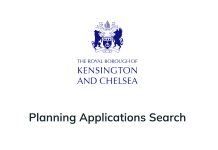Southwark Council explain the move from a paper-based planning application process to an online version in an attempt to reduce paper waste and to streamline processes…
Southwark Council has replaced its online planning system with Idox’s Public Access system, a more robust planning portal, widely used by councils across the country.
The new system will allow the council to improve the way it interacts with developers, residents and stakeholders on issues that affect them.
“Like many local authorities, cost and efficiency is important to us,” says Dennis Sangweme, Group Manager – Validation & Fast Track. “We have implemented electronic processes on the majority of the 5000+ planning applications received per year, from multi-million pound regeneration and development schemes to residents’ own home improvements.”
The system has a simple interface, making it easy for users to submit their planning applications online. Entries are automatically loaded to an online ‘back office’ so updates to application data or documents are available online as soon as they occur. It also provides a standard set of search facilities so that users can search for planning applications as far back as 1996.
“The system has already made it easier and more efficient to process around 600 comments the council gets each week from residents and other interested parties on a variety of planning applications” says Dennis. “It also complements work that has already been done to make it easier for people to keep track of developments in their neighbourhoods, such as Southwark Maps.
“This allows for greater accessibility and transparency as applications and comments are instantly published on the website for the public to view. Making it easier to view and comment on applications is essential to ensure that people feel informed and are able to get involved in decisions that affect their neighbourhoods.”
The previous paper-based process generated up to two million printed pages per year which is time consuming, not environmentally friendly and expensive.
“Our move to an electronic system has changed the way we handle planning applications and it has allowed us as a council to work better and faster,” says Dennis.
“This new way of working will not impact those applying for a planning application as the registration, validation, consultation, assessment and decision making process will stay the same.
“The fundamental difference is that processing of planning applications will be done electronically instead of printing acres of paper at a huge cost to the tax payer.”
Southwark Council’s move to an online system is not surprising. Today, more than 82 per cent of adults in the UK are online. Completing transactions online has become second nature. While the private sector now primarily delivers services online, the use of digital service platforms in the public sector lags far behind.
“We have big plans with regards to the way people consume and respond to local authority information,” says Dennis.
“For example, we are working on a free mobile app for smartphones and tablets to allow users to view application information and submit comments on the go. The app will be developed as part of the
Council’s ongoing Customer Access Programme and MySouthwark to link directly to planning applications on the new system to allow users to view and submit comments on applications.
“In addition, neighbourhood consultation letters, site notices and press notices have been revised and abbreviated to link to the Council’s Idox PA platform to improve visibility and accessibility of notices.”
Residents who do not have access to the internet are encouraged to use facilities at their local libraries and dedicated ‘My Southwark Service Points’ to access online services if needed. Postal comments, when received, are processed into the new system.
As a council, Southwark has already achieved thousands of pounds in savings by moving towards digital service delivery by default in line with the government drive.
“However this is not just about saving money,” says Dennis. “The public increasingly expects to access services quickly and conveniently at times and in ways that suit them. It’s not a matter of leaving people behind but rather, using digital technology to deliver better services at lower costs.” ■
. . . . . . . . . . . . . . . . . . . . . . . . . . . . . . . . . . . . . . . . . . . . . . .
Southwark Council













